Helping Women Overcome Fear in Hereditary Cancer Risk Testing
Hereditary cancer testing empowers women with life-saving knowledge, yet many hesitate to take this step. This hesitation arises not from indifference, but from concerns about what the results might reveal, navigating complex medical information, and facing difficult decisions that may follow.
This is a Agile Methodology workshop class project with a team of 3 designers.
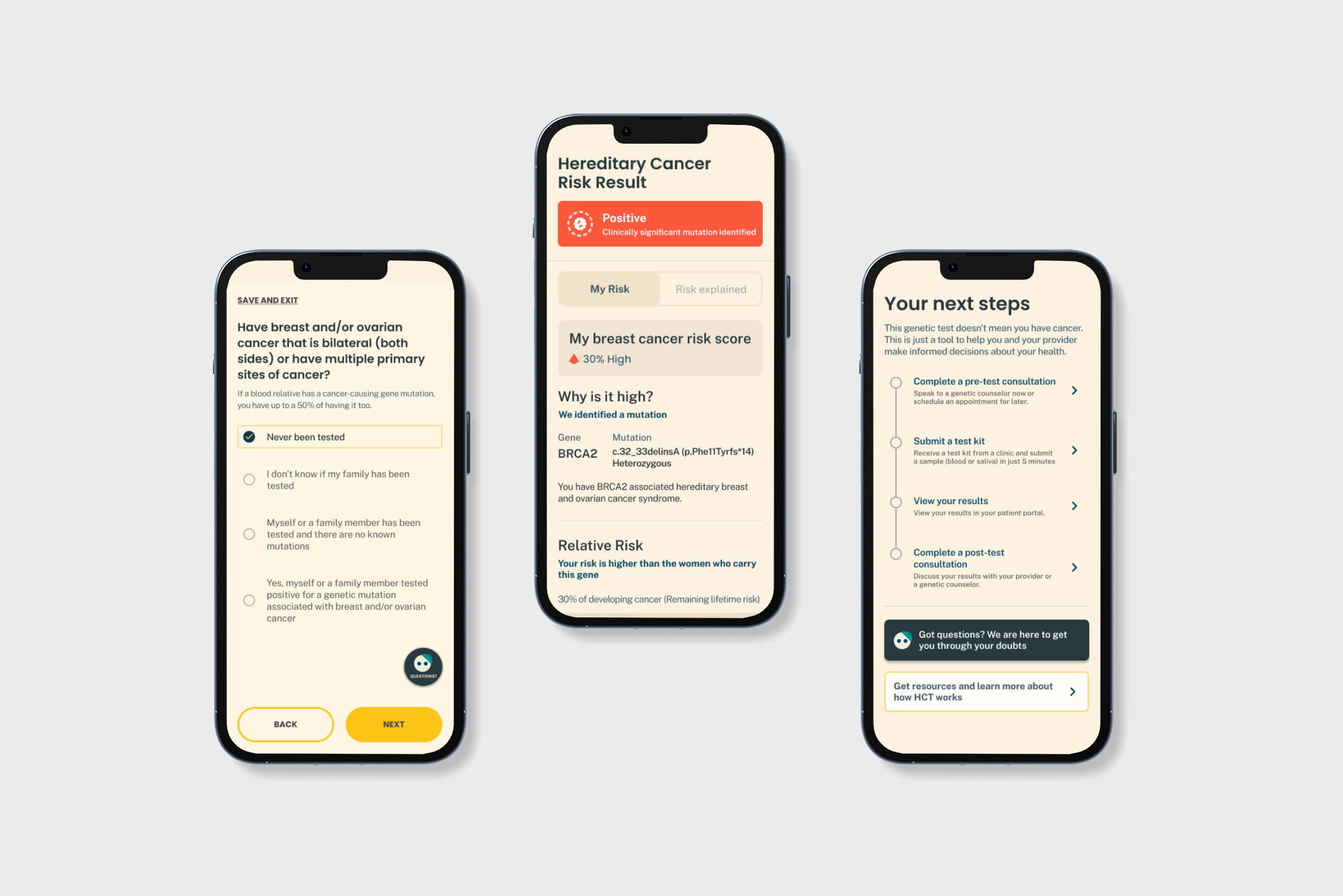
CLIENT
Self-Initiated
TEAM
3 Designers and Faculty
DURATION
14 Weeks
Project Description
Our team set out to explore the motivations and barriers surrounding hereditary cancer testing (HCT) through a behavioral design lens. By applying behavioral design principles, we aimed to uncover the key factors influencing decision-making and identify potential interventions to improve the uptake of HCT.
Leveraging the Agile framework, we deconstructed our broader objective into smaller, actionable tasks, ensuring each step contributed directly to our overarching goal of making hereditary cancer testing more accessible and less intimidating.
Who hasn’t felt a twinge of fear when hearing about a loved one’s battle with cancer?

You may be wondering, 'Am I at risk?' The mere thought of such a terrifying possibility can be disheartening.
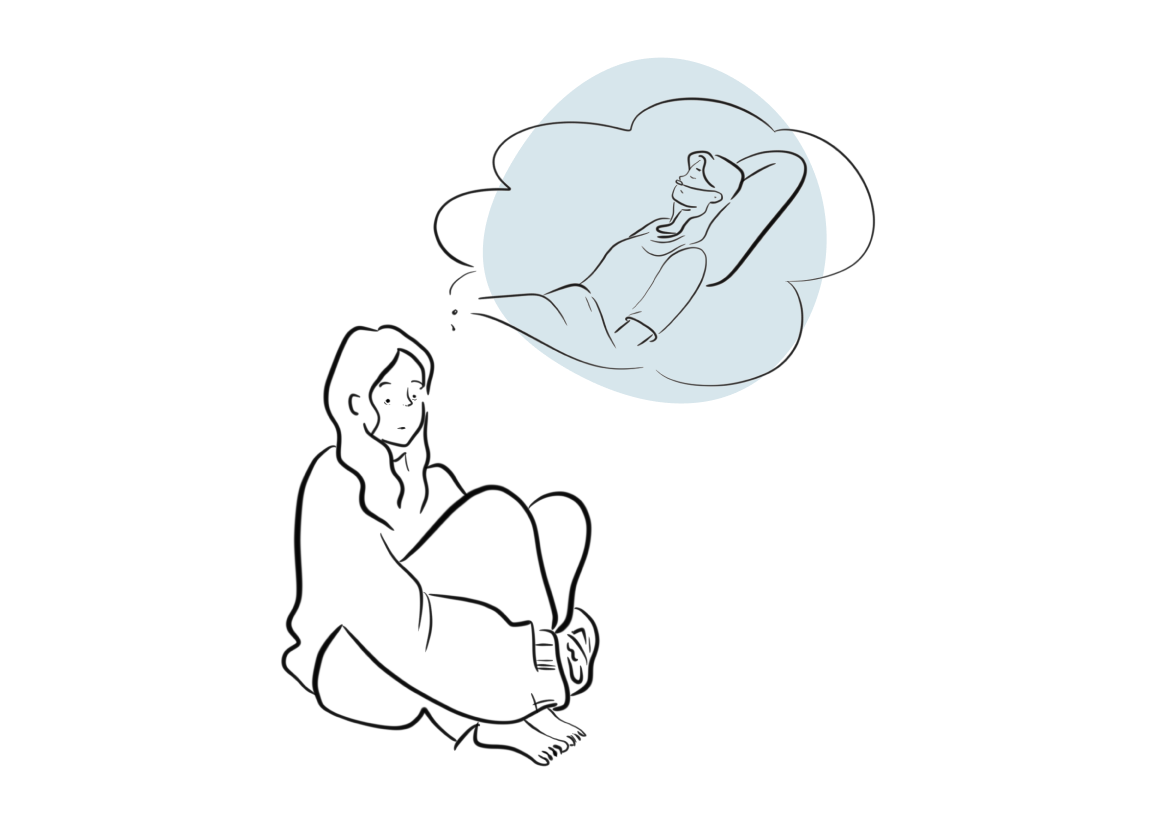
You search tirelessly for answers, reaching out to others, and even attempting cancer assessment tests but you never finish and you can’t reach a solution.

Maybe because you did not have time...

Maybe because the fear of getting a positive result deterred you..

Maybe because the tests did not inspire confidence and confused you

Now you’re feeling worried or anxious about a potential threat

You want to focus on a healthy lifestyle and continue living life to the fullest while feeling supported and identifying your risk

We know cancer is overwhelming

but understanding your risk doesn’t have to be.
Introducing MyGenee
A hereditary cancer testing assessment tool for Women, unaffected, age 30 and above, with or without a family history of cancer.
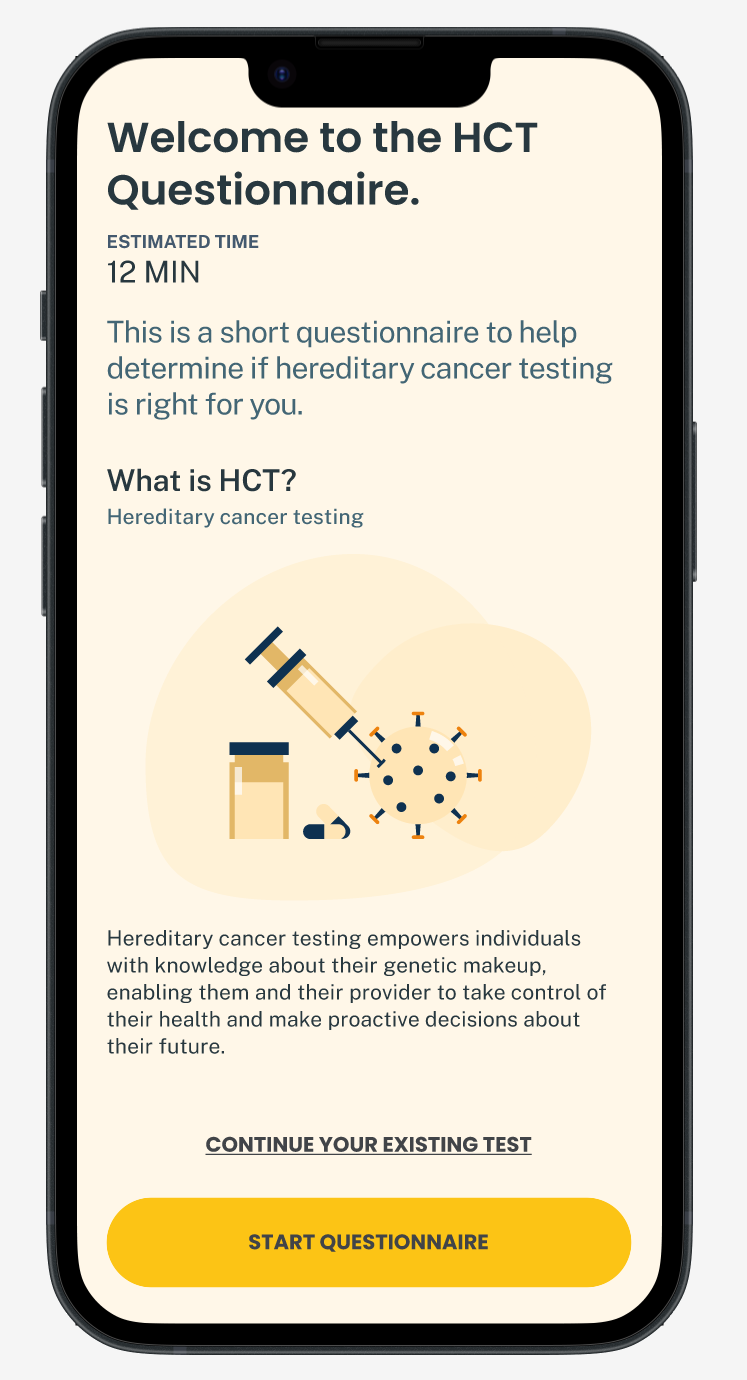
Confused by the questions?
Help is right at your fingertips
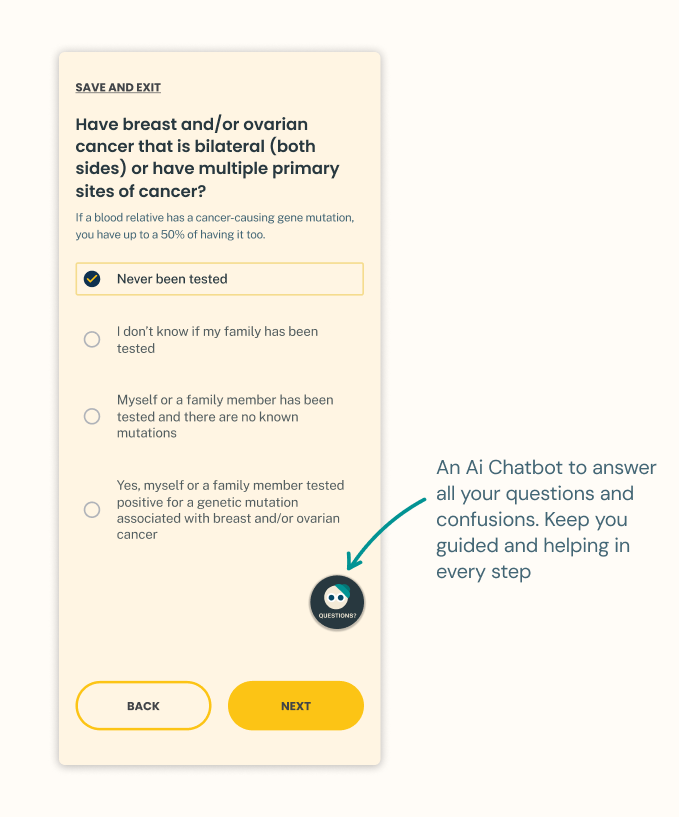
Save and reach out to your family members for answers
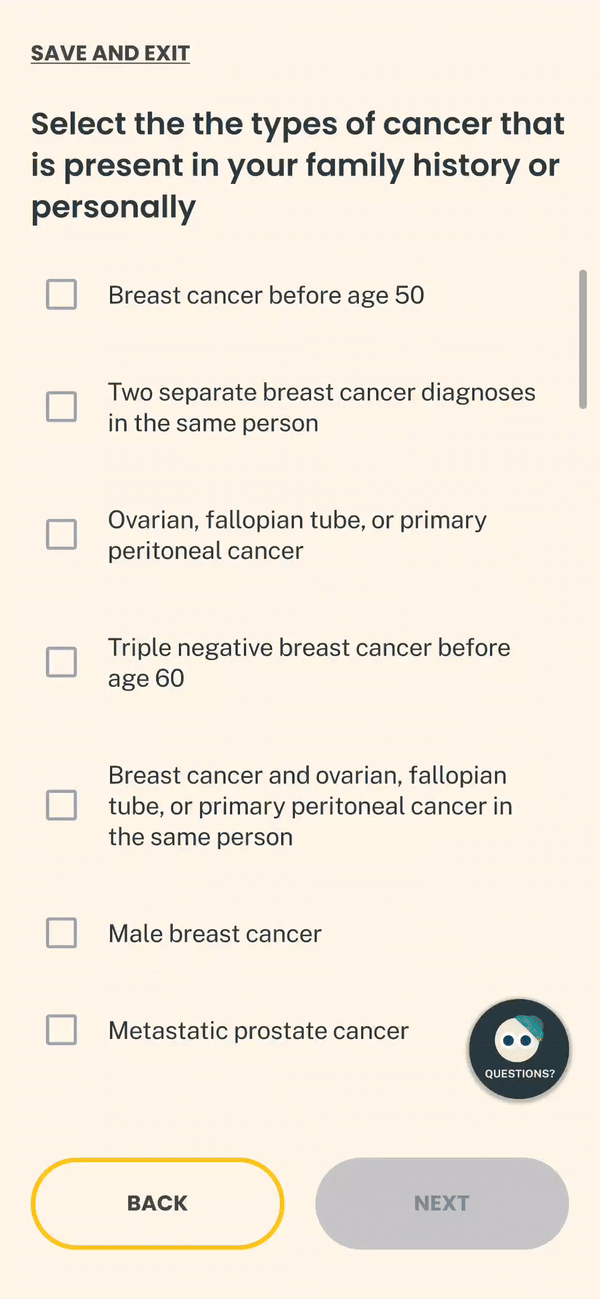
We know your time is precious, and we promise to keep this brief.

Let’s be honest medical reports are complicated. Numbers are tough to understand. You don't have to break your head with us
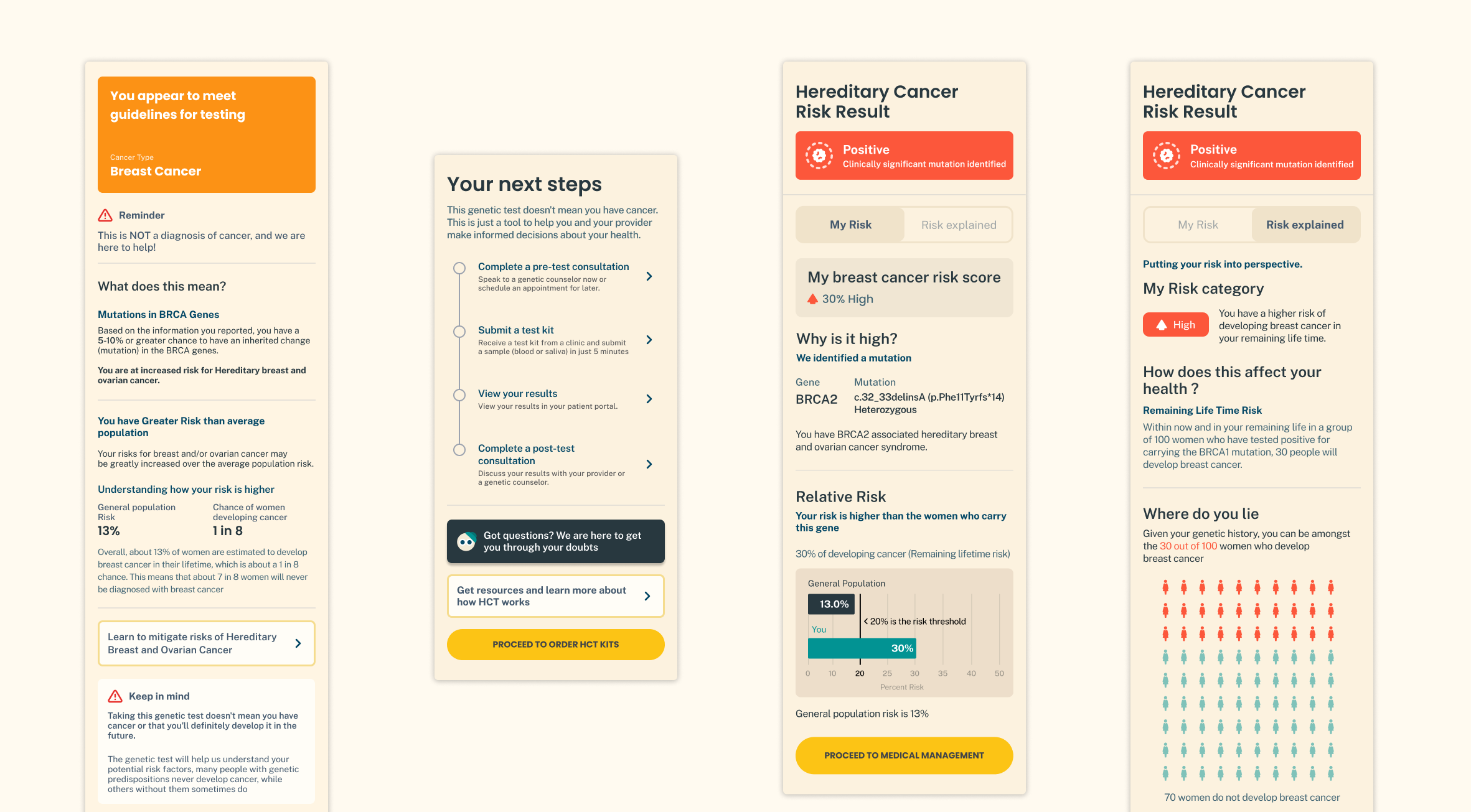
With MyGenee, you can take charge of your health

And you are equipped to manage your health confidently and lead a healthy life free of fear!
Design Process
Statistics reveal 1 in 8 Women in the U.S. Face a Lifetime Risk of Developing Breast Cancer

Who is living with the problem?
Women, unaffected, age 30 and above, with a family history of cancer are at high risk
Without the knowledge of their risk, those at high risk are not only susceptible to disease but are also less likely to catch it before it becomes unmanageable.
Women wish to remain healthy, but the uncertainty during the process prevents them from getting an HCT
These are the 3 major barriers that prevent women from even engaging with the questionnaire
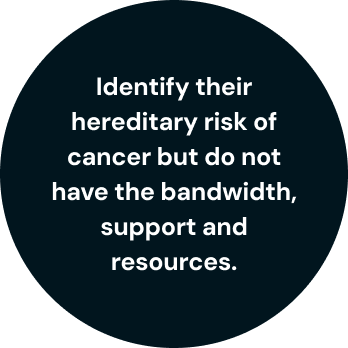
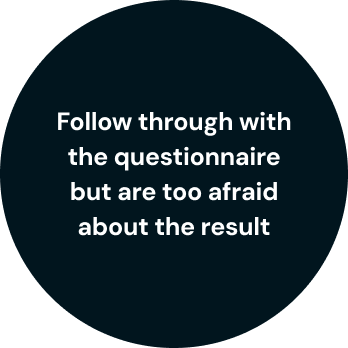
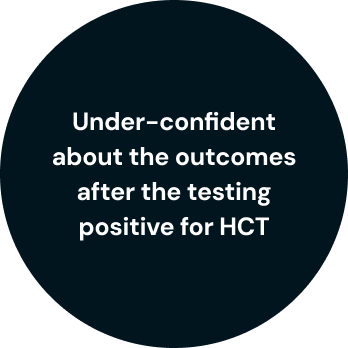
What do they need to accomplish their goals of a healthy lifestyle?
Literature reviews, and in-depth interviews revealed,
Information and access to support groups to feel confident in their ability to manage their risk
Clarification about the process and importance of the test to reduce unnecessary fear of results
Convenience of testing anytime and anywhere
Proper guidance after the questionnaire to direct users to resources and support services for cancer management
These factors motivate individuals to overcome barriers of fear, uncertainty and inconvenience
Risk Perception
Getting yourself screened is stressful, with the possibility of getting diagnosed. This is considered a bigger loss than the eventual benefit of managing your risk early before the disease advances and the positive possibility of a healthy life.
Living without worry
Sense of control; knowing the situation is addressed as opposed to being worried
Personal Efficacy
Knowing they can accomplish the task themselves, or can control the outcome motivates protective health behaviors
Cancer screening is ridden with uncertainty. Fear of a potential cancer drives women away from lifesaving cancer screenings.
We conducted literature reviews, interviews and used journey maps to synthesize findings and uncover key barriers in the process.

Distrust in People
Participants are reluctant to proceed unless they trust the person and/or organization asking them to take cancer screening.
- Cultural beliefs and general distrust in American medical system and doctors
- Absence of support from trusted family and/or friends and peers
"Without the knowledge of their risk, those at high risk are not only susceptible to disease but are also less likely to catch it before it becomes unmanageable."

Loss Aversion/fear of getting diagnosis
The probability of getting diagnosed with cancer is perceived as a greater loss as compared to the probability of being able to manage cancer well by being proactive and preventative
- Visible negative health impacts and social-cultural perspectives on cancer
- Uncertainty around cancer and cancer treatment
"I did not know cancer is hereditary”
“I do not want to give away my genetic data to a company”

Distrust in Product
Distrust in the form and methodology of the screening, as well as the accuracy of the results.
- Lack of privacy about genetic data
- Lack of trust and the legitimacy of the product
"I did not know cancer is hereditary”
“I do not want to give away my genetic data to a company”

Convenience
Health screenings demand additional time out of an individual's routine, which creates frustration.
- Tech has set a high standard for convenience (anytime, anywhere, …immediately)
"I did not know cancer is hereditary”
“I do not want to give away my genetic data to a company”

Women are motivated to get screened if they feel confident and supported in their journey to manage health outcomes.
These key actionable insights are opportunity areas that allow improvement. We used the 5A behavioral framework to help us find insights in each section directing us to the solution.
Desired Journey map
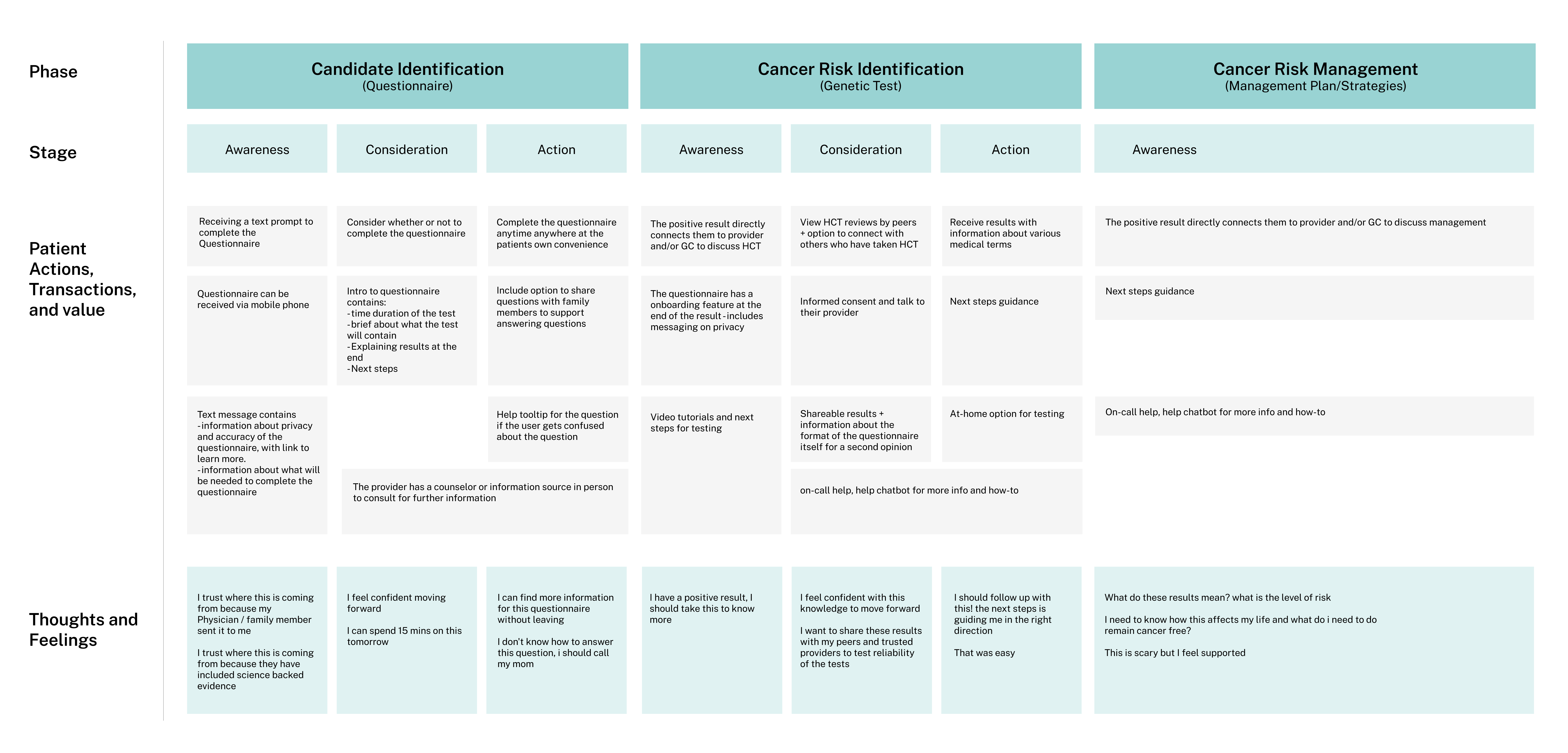
Agile methodology &
Behavioral Design
Enabled us to translate high-level strategy into concrete actions. By decomposing strategic objectives, we created a clear path forward.
Behavioral Design
Applying behavioral design principles and frameworks, to identify behavioral motivations and barriers to HCT. To develop interventions that influence engagement with HCT.
Agile
We blend Agile's iterative approach with Human-Centered Design's user focus, breaking down strategy into manageable steps and continuously gathering feedback to create a product that meets both business objectives and user needs.
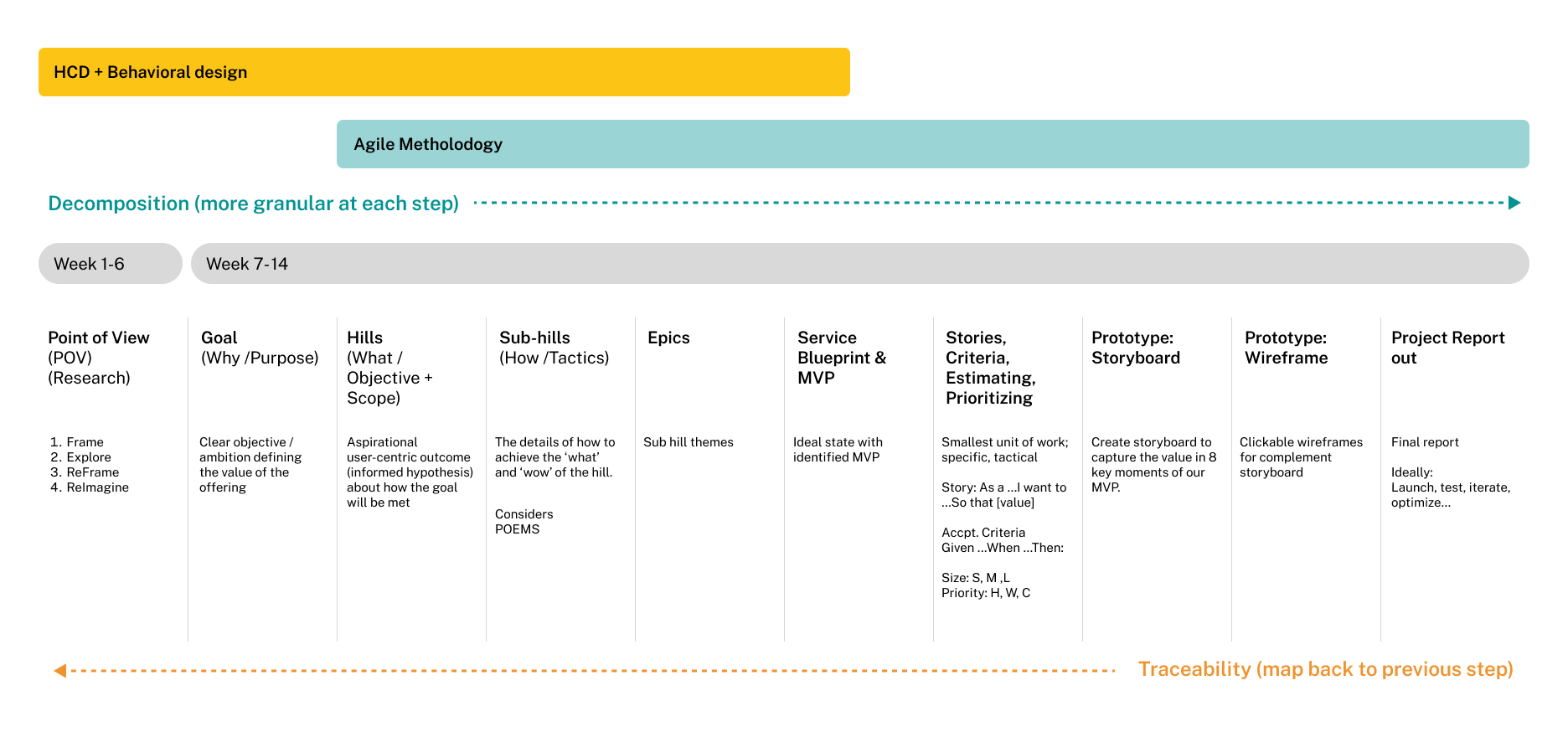
With the IBM Framework we decomposed the problem in to smaller chunks to hills, sub-hills and stories
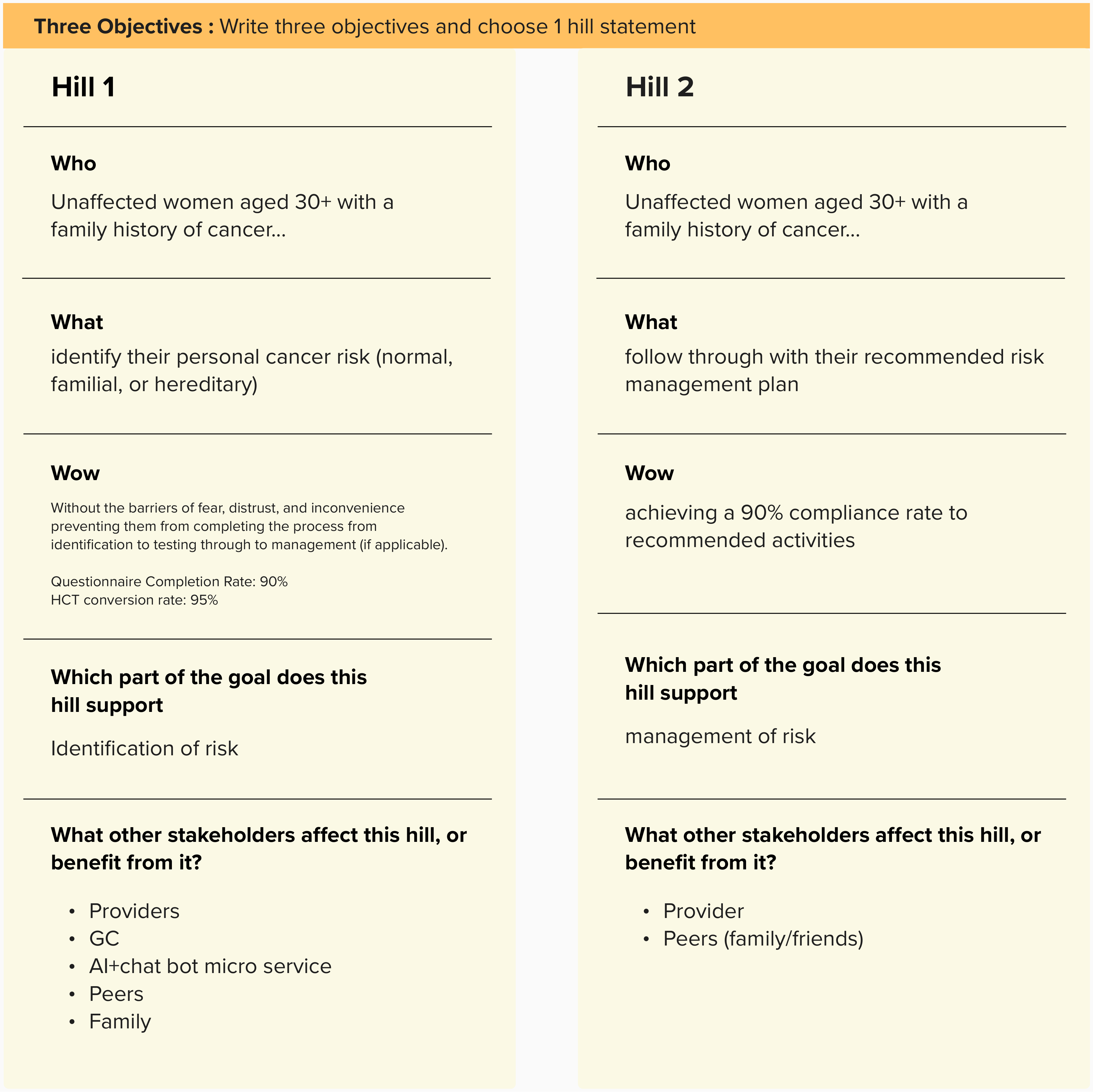

Our Goal
For Unaffected women aged 30+ with a family history of cancer, who do not know their hereditary risk of cancer our product/solution My Genee is a service (digital + physical) with a virtual-first-at-home model that utilizes behavioral design to support and guide them through each step of their journey of identifying their hereditary risk for cancer and transitioning to medical management.
We designed our user's journey by utilizing a service blueprint, visually decomposing the overall experience into discrete components.
The subhills allowed us to transform the objectives to visible tangible artifacts that could fit in the service blueprint. In short it made the invisible, visible.

Questionnaire
Getting yourself screened is stressful, with the possibility of getting diagnosed. This is considered a bigger loss than the eventual benefit of managing your risk early before the disease advances and the positive possibility of a healthy life.

Hereditary Cancer Testing
Sense of control; knowing the situation is addressed as opposed to being worried

Medical Management
Knowing they can accomplish the task themselves, or can control the outcome motivates protective health behaviors

To tackle the challenge of cancer testing, we prioritized key features and approached the project in phases
Prioritizing features to develop a MVP using the KANO model
We prioritized the performance features for our MVP since it tackled our core issues and impacted the user the most.
The adjacent issues were solved by prioritizing features towards the excitement and basic curves.
Our MVP borrows features from all three curves because our solution requires complimenting features (excitement/basic) to solve user needs.

Selected Works

Agile HCTProject type

Research PhotographyProject type

Honda RedesignUser experience

Behavioral DesignBehavior Design

WikisickUX design

Climate WorkshopProject type
Like my designs? Or want to work together? Hit me up on LinkedIn or mail.
Let's Chat
apatil54@id.iit.edu
+1 (312) 866 7105
Socials